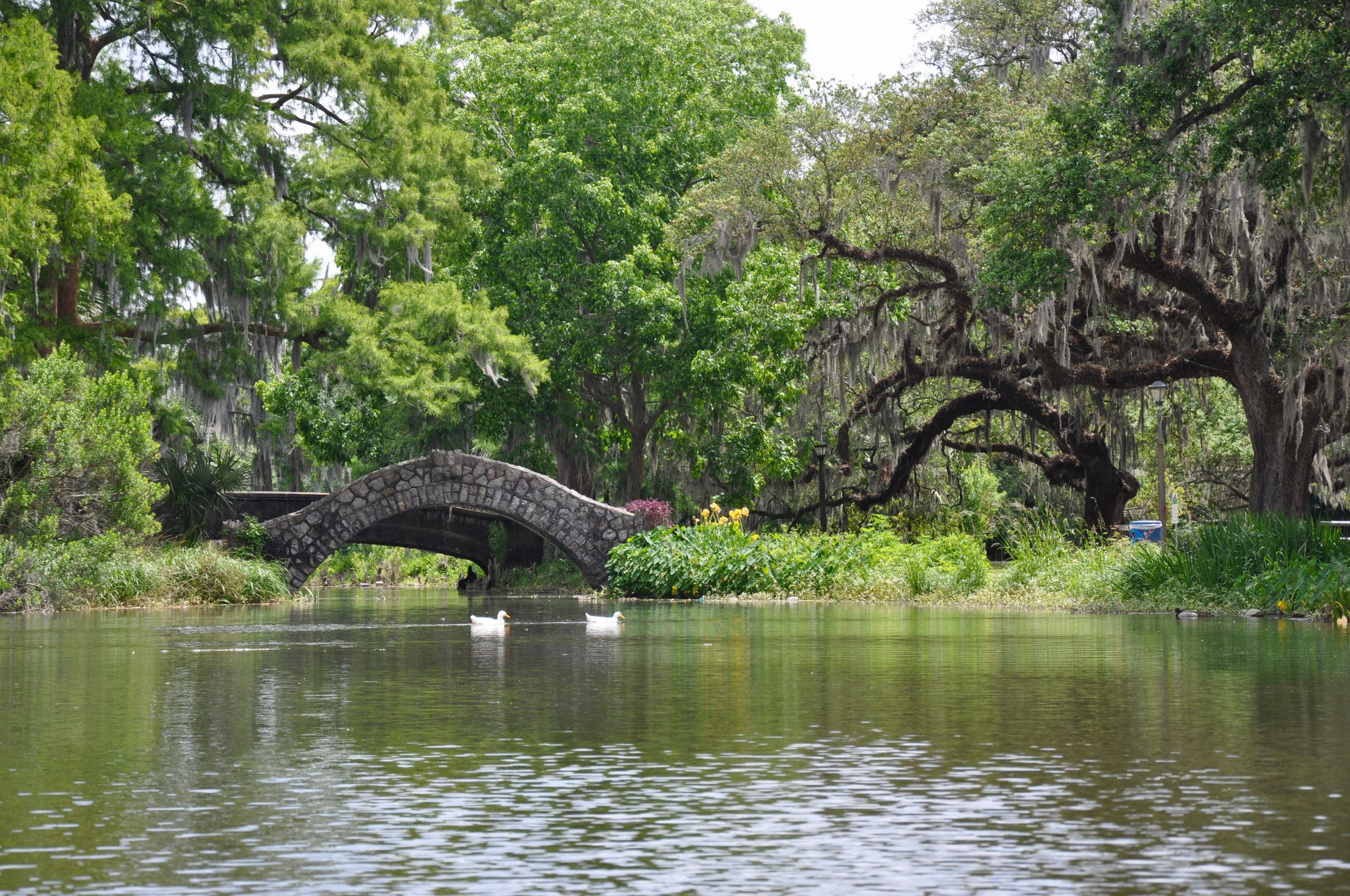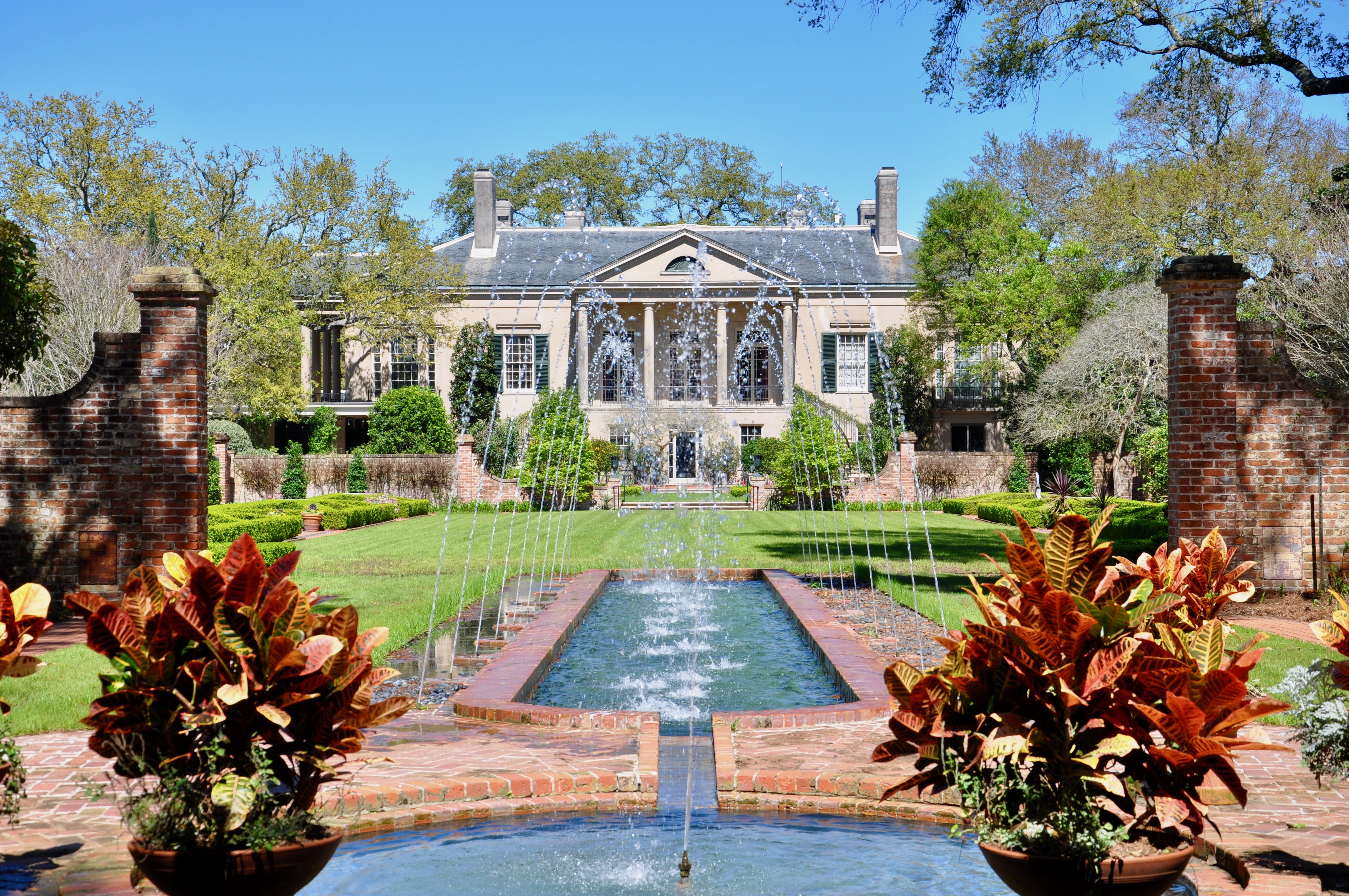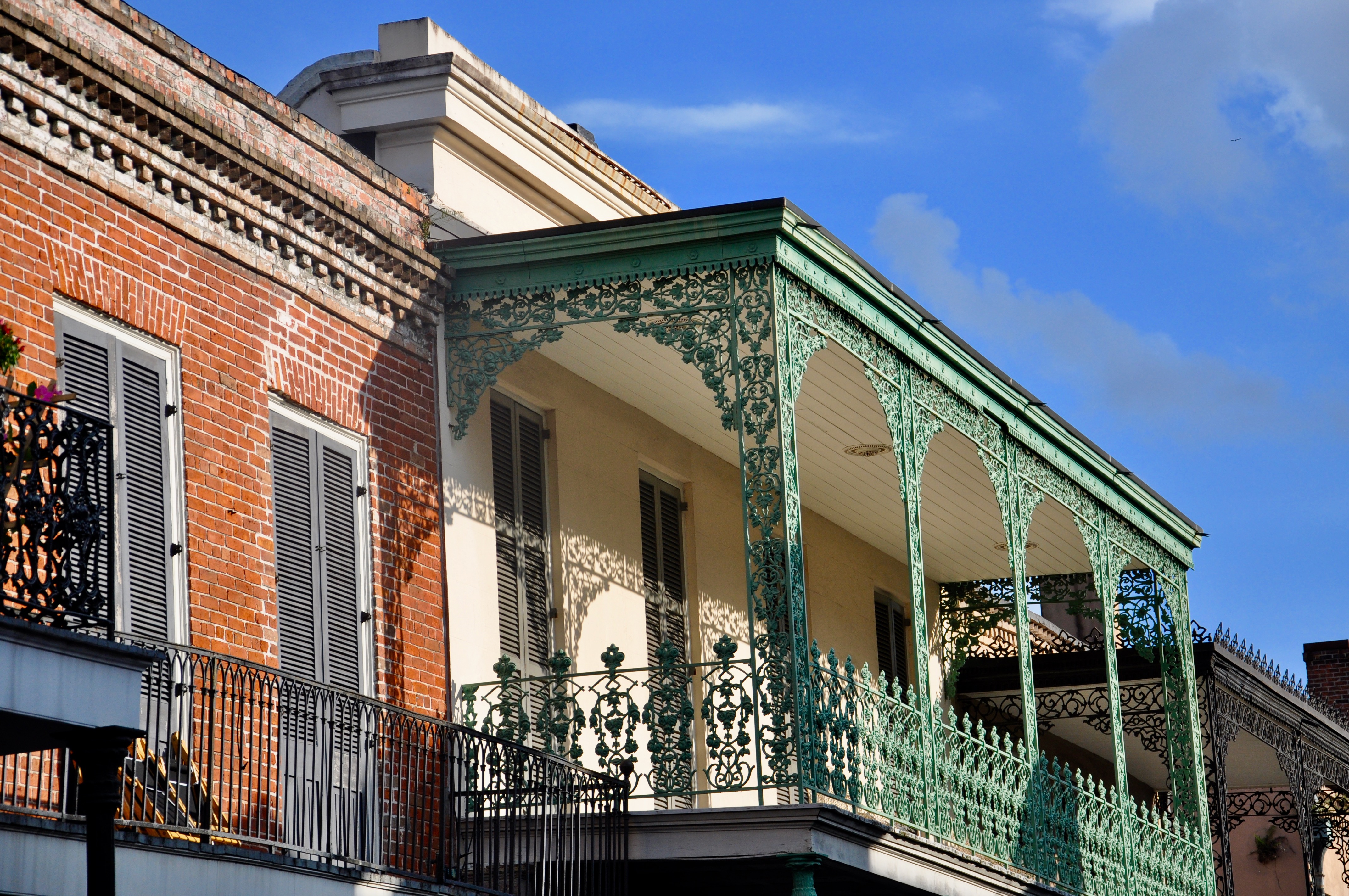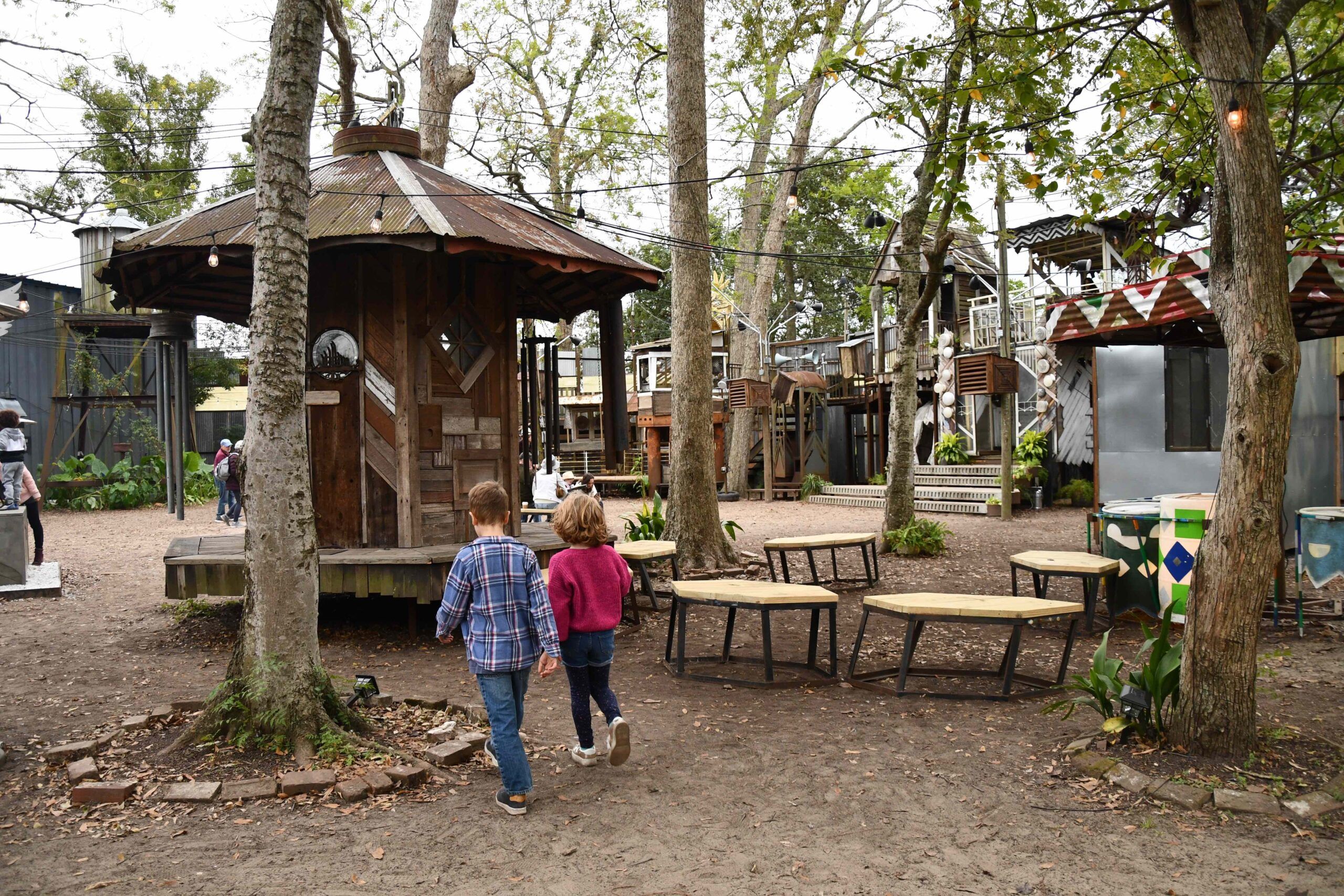Some of our favorite places and things to do in New Orleans

City Park
New Orleans City Park is a sprawling 1,300-acre urban oasis, perfect for outdoor enthusiasts. It’s one of our go to places to hike and enjoy some fresh air. As one of the largest city parks in the U.S., it features the world’s largest collection of ancient live oaks, some over 800 years old. Visitors can explore the New Orleans Museum of Art (NOMA), the Botanical Garden, the Besthoff Sculpture Garden, and Storyland amusement park. For a tranquil escape, the Couturie Forest offers scenic hiking trails and prime bird-watching opportunities, plus Laborde Mountain, the city’s highest point at 27 feet above sea level.

Longue Vue House & Gardens
Discover Longue Vue Gardens, a hidden oasis nestled within the city’s heart. Established in 1921 as the private residence of Edith Rosenwald Stern and Edgar Bloom Stern, this eight-acre haven opened to the public in 1968 and became a nonprofit museum and garden in 1980. The gardens, crafted by the renowned 20th-century landscape architect Ellen Biddle Shipman—a visionary and close friend of the Sterns—showcase a variety of enchanting spaces, including a children’s garden and a native plant garden. Among the many seasonal highlights, the blooming of the Louisiana iris each spring stands out as a personal favorite, offering a spectacular burst of color and beauty. Longue Vue Gardens is not just a garden, but a living testament to timeless design and nature’s splendor.

Chalmette Battle Field
Just south of New Orleans, the Chalmette Battlefield stands as a testament to the pivotal Battle of New Orleans, fought on January 8, 1815. This historic site features a reconstructed American rampart, an authentic 1830s house, and the imposing 100-foot Chalmette Monument. Visitors can explore the battlefield through engaging outdoor exhibits and enjoy informative displays and a film at the Visitor Center. Adjacent to the battlefield, the Chalmette National Cemetery honors over 14,000 American soldiers from the War of 1812 to the Vietnam War, offering a poignant reminder of the sacrifices made in service to the nation.

Snowballs
When summer rolls around in New Orleans, locals and visitors alike flock to one of the city’s most beloved treats: snowballs. This iconic dessert is not just a way to cool down but a cherished part of the city’s culinary heritage.
The story of the New Orleans snowball begins in the 1930s, thanks to the ingenuity of two local visionaries, George Ortolano and Ernest Hansen, who each invented their own ice-shaving machines independently. Their innovations revolutionized the way snowballs were made. Prior to these machines, vendors would shave ice manually using hand-held devices, a labor-intensive process that made snowballs a rare and cherished treat.
Ortolano and Hansen’s machines allowed for a more consistent texture and made it possible to serve snowballs to a wider audience. While many snowball stands have come and gone over the years, a few have truly stood the test of time. Here are three of our family’s favorite spots where you can experience the best of New Orleans’ snowball tradition:
1. Hansen’s Sno-Bliz
2. Plum Street Snowball Stand
3. Sal’s Snowballs in Old Metairie

Cemeteries
New Orleans’ cemeteries, often referred to as “cities of the dead,” are renowned for their stunning architecture and rich historical narratives, reflecting the diverse immigrant heritage of the city. Among them, St. Louis Cemetery No. 1 and No. 2 are the oldest, showcasing intricate mausoleums and graves that tell tales of New Orleans’ storied past. Another notable site is Metairie Cemetery, located near City Park. Originally a racetrack, it was transformed into a cemetery after the Civil War, and the oval shape of the track is still visible today. As one of the city’s largest and most historic burial grounds, Metairie Cemetery features elaborate monuments and memorials, offering a unique glimpse into New Orleans’ vibrant history.

French Quarter
The French Quarter, the historic heart of New Orleans, is celebrated as one of America’s most iconic neighborhoods. Renowned for its vibrant nightlife, it also offers a more tranquil experience in the early morning hours. The Quarter boasts a wealth of famous restaurants, nightclubs, and street performers. Notable spots to visit include the Historic New Orleans Collection and the Louisiana State Museum, which offer deep dives into the city’s rich history. The stunning St. Louis Cathedral stands as a majestic centerpiece, while Preservation Hall offers an authentic jazz experience. Don’t miss enjoying a refreshing Pimm’s Cup at the historic Napoleon House, a quintessential New Orleans experience.

Music Box Village

Magazine Street
Historic Magazine Street is New Orleans’ longest shopping corridor, stretching six miles through the vibrant Uptown neighborhoods, from the Lower Garden District to Audubon Park. Established in the late 1700s and early 1800s, this thoroughfare originally featured numerous rues de magasins or shops and was home to four distinct markets. Today, Magazine Street is a bustling avenue lined with an eclectic mix of unique boutiques, charming antique stores, and delectable restaurants. Highlights include an array of antique shops and fine jewelry stores, making it a must-visit destination for those seeking distinctive finds and a taste of New Orleans’ rich history.

Garden District
The Garden District is one of New Orleans’ most historic neighborhoods, framed by St. Charles Avenue, Magazine Street, Jackson Avenue, and Louisiana Avenue. This area is renowned for its beautifully preserved 19th-century architecture, making it an ideal destination for a leisurely stroll through classic Southern charm. Visitors can explore an array of charming shops and restaurants, including the renowned Commander’s Palace. For those interested in a more guided experience, the Garden District Book Shop, located at 2727 Prytania St. in The Rink shopping center, offers excellent walking tour guides to help uncover the rich history and distinctive features of the neighborhood.

